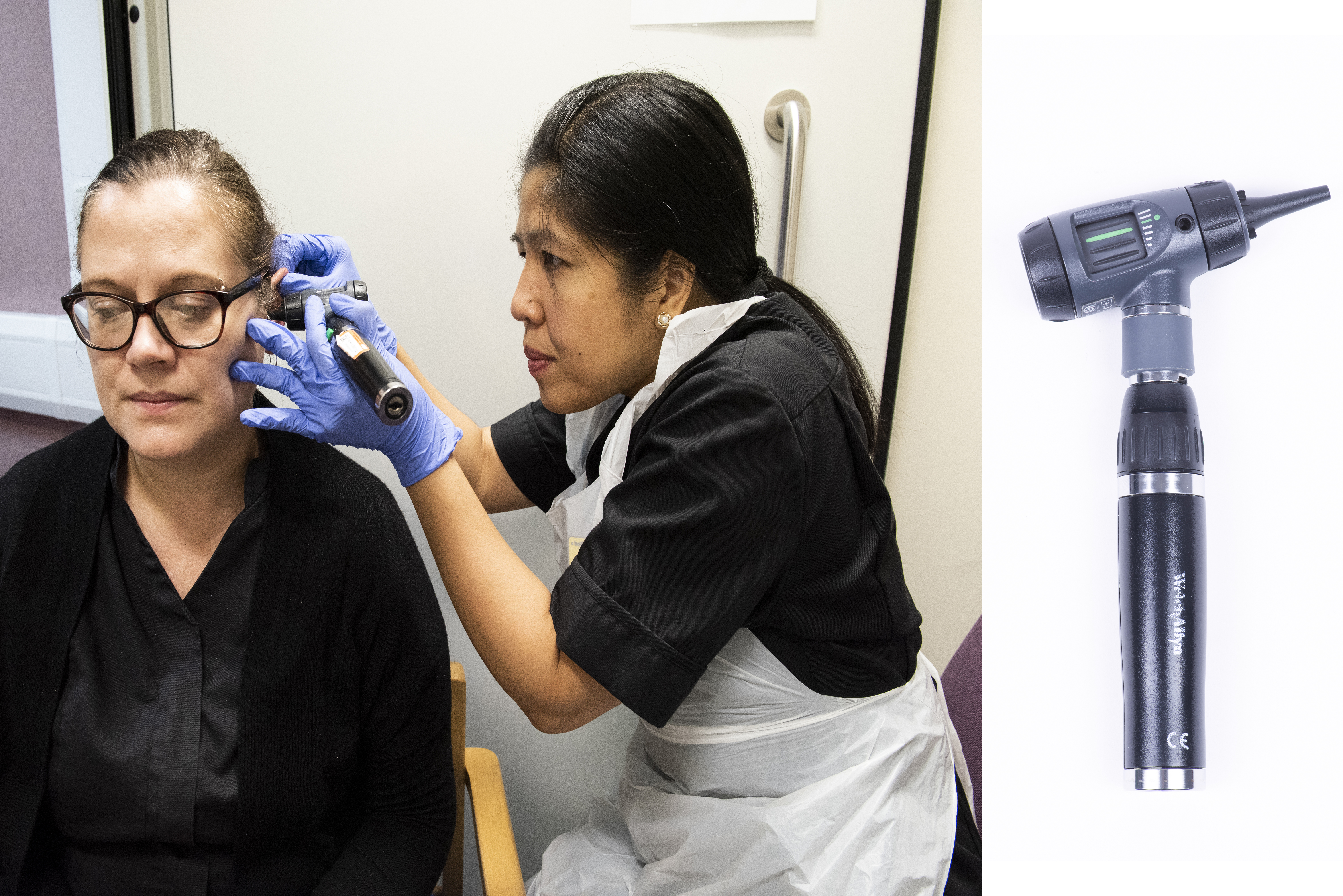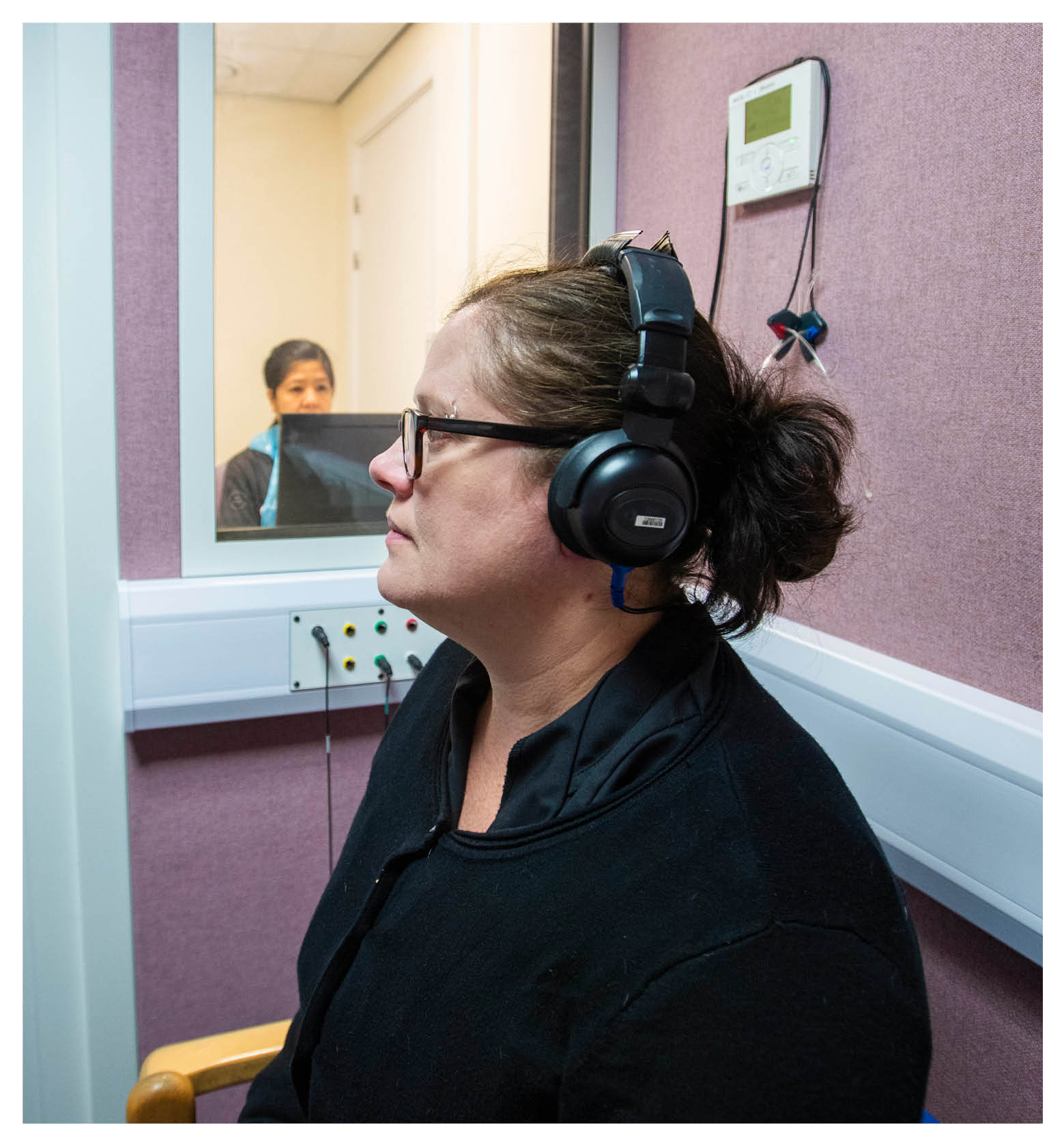Having a hearing aid assessment at the hospital
Information for patients from the Audiology Department
Due to possible hearing difficulties, your GP or ear nose and throat (ENT) consultant have referred you for a hearing aid assessment at the hospital. This leaflet explains:
what tests are included in your assessment, and
what happens afterwards.
If you have any questions after reading this leaflet, please speak to the audiologist at your assessment.
Please see your appointment letter for where to come when you arrive at the hospital.
What will happen at my hearing aid assessment?
When you arrive at the hospital, you will be taken into a treatment room. The audiologist will ask you some questions about your medical history and hearing problems.

They may complete a simple questionnaire with you. This asks if there are any situations or places where you find your hearing is worse. This can include crowded places or where it is particularly noisy.
The audiologist will then examine both of your ears with an otoscope. An otoscope is a small hand-held device that illuminates (throws light on) your ear canal and ear drum.
To perform this test, a small tip is placed just into the entrance of your ear canal.
The purpose of the test is to determine the quietest sounds that you can hear at different pitches. The sounds will be heard through headphones and a headband. These devices cover your ears and go across your head.
-
 A patient wearing headphones
A patient wearing headphones -
.jpg) A patient wearing a headband
A patient wearing a headband -
 The hand-held button
The hand-held button
You will be asked to press a hand-held button every time you hear a sound. You may be asked if you can hear the sounds even when there is background noise.
A further test may be needed to check the health of your ear drum and middle ear. This called a tympanometry. The test involves:
placing a small rubber tip just in the entrance of your ear canal, and
slowly changing the pressure in your ear, it feels like a gentle flow of air in your ear canal.
This test takes a few seconds for each ear and is not uncomfortable. If you need to have this test, your audiologist will explain what will happen in more detail during your appointment.
How do I prepare for my appointment?
Please make an appointment to see your GP at least two weeks before your hospital visit if:
you feel you may have too much wax in your ear, or
an ear infection.
Your hearing tests can be affected or cancelled if you have either.
Your hearing test can be affected if you have recently been exposed to loud noises. This can include loud concert noises or heavy machinery drilling. Do not expose yourself to very loud noises for 48 hours before your appointment.
Before your appointment, think about the situations where you have trouble hearing. Write them down to bring to your hospital appointment.
What happens after my assessment?
After your assessment you will discuss with your audiologist the results of your test(s). You will decide with them whether you need a hearing aid, and if you would like to have one.
If you decide to go ahead with a hearing aid, you will discuss with your audiologist whether you will need one or two hearing aids.
To fit the hearing aid, we may need to take an impression (mould) of your ear. This involves inserting a soft foam stopper into your ear canal. Your ear is then filled-up with a smooth paste, which takes approximately five minutes to set. This is not uncomfortable.
Your audiologist will send the mould to the manufacturer. It will be made into a clear plastic ear piece, which your hearing aid will be attached to at your fitting appointment. The fitting appointment will be made by the hospital once your hearing aid is ready. For more information about having an ear impression, please ask for a copy of the Trust’s Ear impressions for hearing aids.
A thin sound tube hearing aid fitting can be prescribed in some cases. This will depend on how bad your hearing loss is. Your audiologist will discuss this with you.
Before you leave hospital, your audiologist will give you a leaflet about:
wearing your hearing aid, and
what to expect after your fitting appointment.
When will I have my fitting appointment?
You will need to return to the Audiology Department to have your hearing aid fitted. It is likely that your hearing aid fitting appointment will be within two months of your hearing assessment.
Contact details
Audiology Department
Telephone: 01227 864252
Lines are open 10am to 12 noon, and 2pm to 4pm
Email